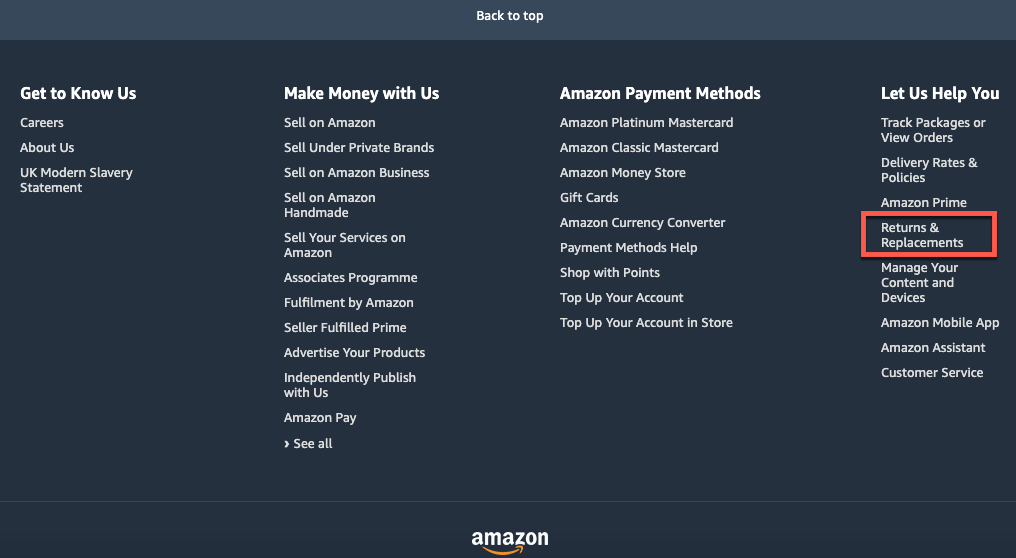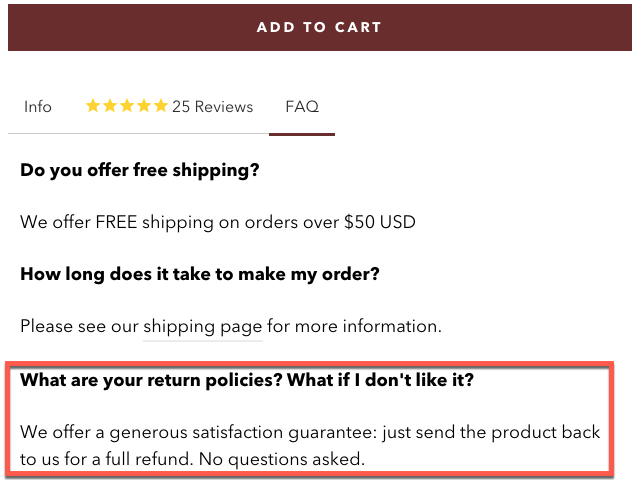Five tips to create a great return policy and earn more loyal customers
When you’re selling products online, it’s normal for returns, exchanges and refunds to happen. They’re all part of doing business.
A customer can’t try out, hold, touch, see, smell or feel a product on your site before hitting that “Buy now” button. So of course, it’s possible that when it finally gets to their doorstep, they realise they ordered the wrong size, they don’t like it or it simply doesn’t meet their expectations. The next obvious step is to ask for a replacement or their money back.
This happens more often than you think. In fact, one in three of all products bought online end up being returned to the retailers, a rate 2.4 times higher than in the “traditional” brick-and-mortar stores.
While this may sound alarming, a high return rate isn’t always a direct threat to your bottom line. But it can be a huge problem if you’re making returns and replacements difficult, hoping that that’ll ultimately reduce them.
An nonexistent, hidden or confusing return policy hurts your customers’ experience as it leaves them unhappy and unwilling to purchase from your brand again or recommend you to others.
On the other hand, a great return policy where the customer can commit to a purchase and return or exchange it if it’s not to their liking is what impresses prospects and immediately turns them into loyal customers.
In this post, we’ll share a few tips on how to create a great, transparent and easy to understand return policy that will benefit not only your customers but also your business.
But first…
What is a return policy and why do I need one?
A return policy is where you inform customers about your return, exchange and refund process. It tells customers exactly where they can and can’t return products, and for what reasons. It also gives them an exact timeframe for their return and refund to be handled.
If you have an ecommerce site where you sell products online, you can’t be without a returns policy. Why? Because 49% of shoppers actively check a store’s return policy before buying. So if yours is difficult to find or to understand, they’ll have a hard time trusting to buy from you, which means they’ll immediately leave and go to your competitors instead.
So, if you want to build trust and encourage customers to feel safe to buy from you, you’ll need put in the effort to create a solid return policy. This not only tells them that you stand by your products but also that you provide a stellar customer experience where anyone can commit to a purchase without fear of consequence.
Five tips to create a great return policy
Now that you know what a returns policy is and why it’s a must-have for any ecommerce website, let’s look at a few tips and examples to help create or improve yours.
1. Make sure customers see it
The worst thing you can do is to hide or make your return policy difficult to find. That will only cause suspicions, which is bound to drive prospects away.
You have no reason to hide your return policy. On the contrary, ensuring customers see it can result in fewer returns since they’ll be aware of the terms of purchase and return.
So, make sure your policy is visible in several places throughout your site where customers can’t miss it, such as:
- Your website’s header and footer
- The FAQ page
- The product page, right under the “Buy now” or “Add to cart” button
- In the cart
- At checkout
Here is an example from Amazon where they’ve included links to their returns policy both in the header and footer:


It’s also a good practice to include it on the product page, like in this example:

If you click on FAQ, below the “Add to cart” button”, it reveals a section with a few common questions and answers that are fantastic at reassuring prospects that they’re making the right and safe choice.

2. Avoid scary wording
If someone is reading your policy, it means they found a great product on your site that they’d like to buy. Now all they need is some assurance that they can return or exchange it hassle-free.
Your return policy’s goal is to do just that – to build their trust and reassure them that if they’re not happy with their purchase, they can return or exchange it with ease.
The chances of that happening if your policy is littered with words like “required”, “cannot return or exchange “, “not our responsibility” is close to zero.

These kinds of words scare and drive people away. It’ll make them feel like it’s a huge hassle to return a product, and they might have difficulty getting their money back.
So what can you do instead? Be human, emphatic and friendly like in this example:

And don’t forget, your policy will also need to reflect any rights the consumer may have. You can find an overview of UK consumer rights here.
3. Keep it clear and simple
There are lots of questions, problems and situations that you’ll need to cover in a return policy. The best way to make sure prospects can easily find the answers they’re looking for is to explain everything clearly. This means avoiding complicated legal jargon and instead, using simple language that everyone can understand.
Here are a few key things you’ll want to address in your policy:
- How many days does the customer have at their disposal to return an item?
- Can they only return it if it’s damaged or if you’ve sent them the wrong size or product by mistake, or also if it’s not what they expected?
- Who pays for the return? If you offer free returns (which is something most customers expect), is there a limit on the number of free returns?
- When it comes to refunds, do you offer store credit for future purchases, or do they get their money back? How long until they receive their refund?
- Does the customer need to return the product in its original package? What if it’s damaged or they don’t have it anymore?
Check out this refund policy from Bergfreunde for other ideas on what to include in yours.
4. Use graphics to explain the return process
A great way to walk customers through your return process is to visually represent each step.
Here’s an example of how you can do that:

This makes the process clear and easy to understand. In addition, people will know exactly what to expect and when.
5. Don’t copy and paste
Creating a return policy may take some time and effort but it’s worth it. Don’t take the easy way out by copy and pasting from return policy templates available online or another shop’s policy.
While you can use them to get ideas on what to include and how to organise the information, make sure you create your own where you use your own voice, personality and branding.
Wrapping up
Creating a simple, clear, and transparent return policy is key to providing customers with a safe and better buying experience. It also helps to reduce returns since prospects know the terms and conditions of returning a product before they click that “Buy now” button.
If you use the tips and advice in this post, the chances are you’ll be one step ahead of the competition in terms of providing a wow customer experience to anyone who shops on your site.
